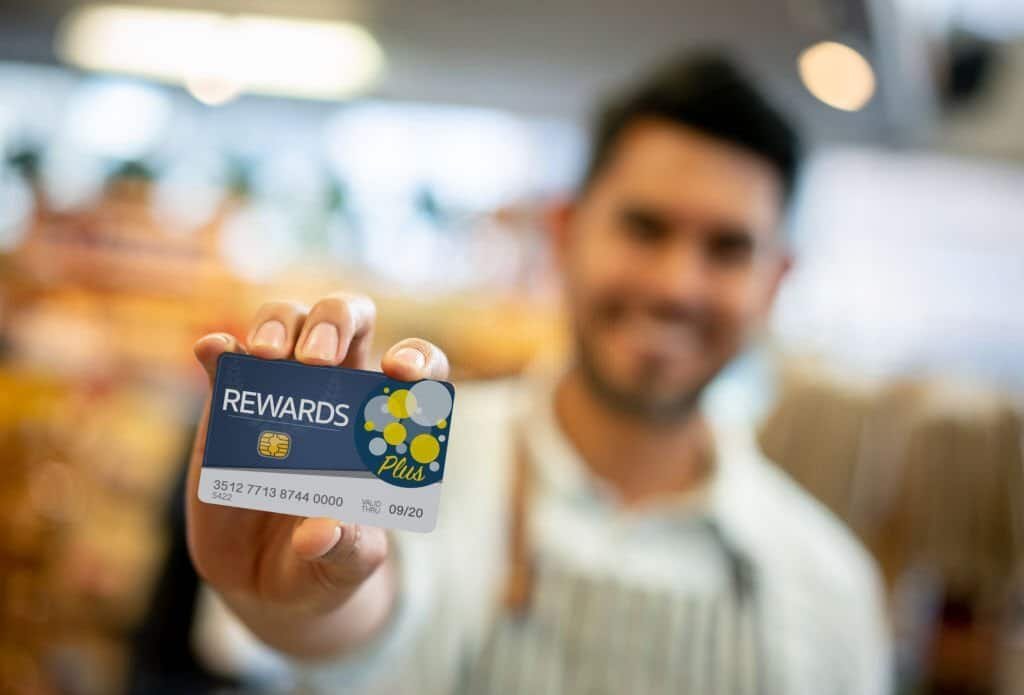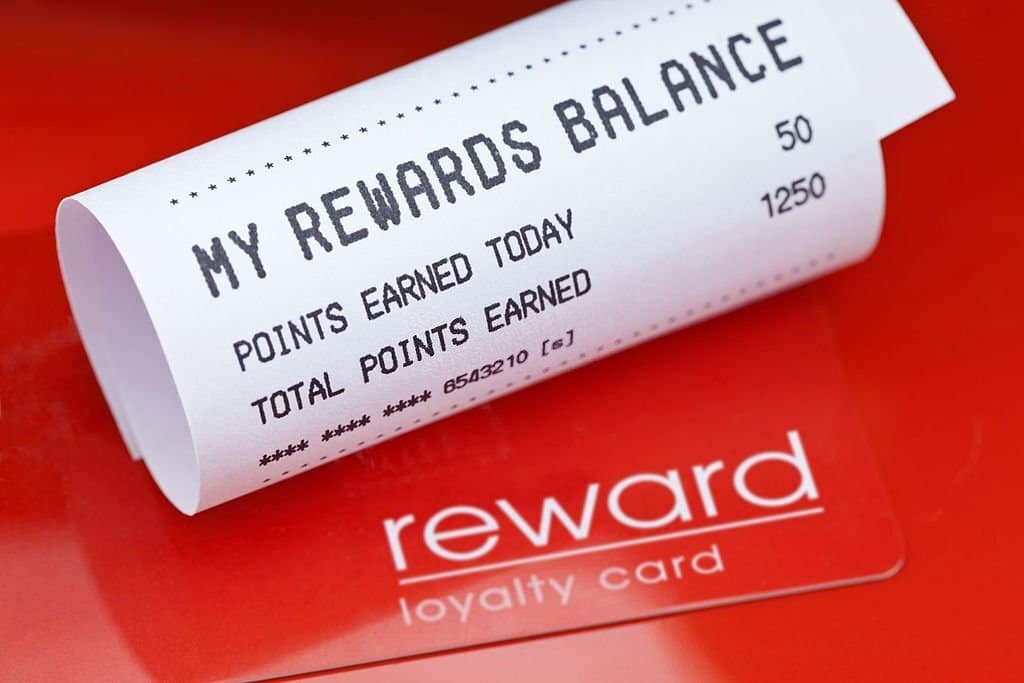The Ultimate Guide to Loyalty Stamp Cards
Posted on |
How to Boost Customer Retention and Sales with loyalty stamp cards
Table of contents

What are loyalty stamp cards?
Are you familiar with loyalty stamp cards? These little pieces of paper or plastic are often handed out by businesses as a way to reward customer loyalty. But how do loyalty stamp card works? In this article, we’ll explore the ins and outs of loyalty stamp cards, including how they function, what benefits they offer, and how businesses can use them to increase customer engagement and loyalty.
Loyalty stamp cards are a simple way for businesses to reward customers for repeat purchases. The stamp cards feature a series of spaces for stamps or stickers, which are awarded each time a customer makes a purchase. Once the card is full, the customer can redeem it for a free or discounted product or service. The concept is straightforward, but there are plenty of nuances to explore.
Whether you’re a business owner looking to boost customer engagement or a customer curious about the benefits of loyalty programs, this article is for you.
We’ll dive into the history and evolution of loyalty stamp cards, explore some best practices for implementing them effectively, and offer expert insights on making the most of this powerful marketing tool.
So without further ado, let’s jump into the world of loyalty stamp cards and discover what makes them a valuable asset for businesses and customers.
Brief history of loyalty stamp cards
Loyalty stamp cards have been used by businesses for decades as a way to reward customer loyalty. The concept dates back to the 1920s when businesses began offering loyalty stamp cards to customers. Customers would collect stamps with each purchase and when they accumulated a certain number of stamps they would get a reward.
Over the years, loyalty stamp cards have evolved to include more sophisticated technology, such as barcode scanners and digital points systems.
Today, loyalty stamp cards can be found in many businesses, such as grocery stores, gas stations, and department stores. They are an effective way to encourage customers to keep returning, as they can accumulate points with each purchase and then use those points to get rewards or discounts.
Section 1: Benefits of Loyalty Stamp Cards
- Increased sales: Loyalty stamp cards encourage customers to return to your store and purchase more products in order to get the rewards they’re after. This in turn leads to increased sales and more revenue for your business.
- Improved customer loyalty: Customers who feel appreciated and rewarded for their loyalty are likelier to return for more. They become more loyal to your business and can even refer their friends and family.
- Enhanced customer experience: Loyalty stamp cards provide customers with an incentive to keep coming back and buying more. This helps them feel valued and appreciated, which can lead to a better customer experience and higher customer satisfaction.
- Increased customer data: As customers collect stamps, you can collect data on their purchases and buying habits. This data can be used to better understand your customers and create more effective marketing campaigns.
- Improved customer retention: Loyalty stamp cards help keep customers coming back, leading to improved customer retention and a more successful business.
- Boosted customer engagement: By providing customers with the opportunity to collect loyalty stamps, you can encourage them to interact with your brand more often and stay engaged.
- Increased word-of-mouth referrals: Customers who have been rewarded for their loyalty may be more likely to recommend your business to their friends and family.
- Enhanced brand recognition: Loyalty stamp cards are a great way to promote your brand and help customers remember your business. They also provide a physical reminder of your brand every time customers use their cards.
- Better customer targeting: By analyzing the data collected from loyalty stamp cards, you can create more effective and targeted marketing campaigns.
- Cost-effective: Loyalty stamp cards are a cost-effective way to reward customers and encourage them to return to your store.

Section 2: How to Create Effective Loyalty Stamp Card
Step 1: Define Your Goals
Before creating a loyalty stamp card program, it is essential to define your goals. Ask yourself what you hope to achieve through this program. Are you looking to increase sales, encourage repeat business, or build customer loyalty? Defining your goals will help you create a program that aligns with your overall business strategy.
Step 2: Determine the Reward Structure
The reward structure is the backbone of your loyalty stamp card program. You need to decide what rewards to offer and how many stamps a customer needs to earn a reward. The rewards can be anything from discounts on future purchases to free merchandise or services.
Step 3: Choose a Card Design
The card design is an essential part of your loyalty stamp card program. It should be visually appealing and reflect your brand’s image. You can either design the card yourself or hire a professional graphic designer to design it for you.
Step 4: Train Your Staff
Your staff plays a crucial role in the success of your loyalty stamp card program. They need to understand the program’s benefits, how to issue and redeem stamps, and how to handle any customer questions or concerns.
Step 5: Promote Your Program
Promotion is key to the success of your loyalty stamp card program. You can promote the program through in-store signage, social media, email marketing, and word-of-mouth. Make sure to highlight the rewards and the benefits of the program.
Step 6: Monitor and Evaluate
To ensure your loyalty stamp card program’s success, you need to monitor and evaluate its performance regularly. Keep track of how many stamps are issued and redeemed, and make adjustments as needed.
Section 4: Common Mistakes to Avoid loyalty stamp card program
- Not setting clear goals or measuring results
- Offering rewards that are not relevant or valuable to customers
- Failing to communicate the program to customers effectively
- Neglecting to train staff on the program
- Not adapting the program to changing customer needs and preferences
- Not providing an easy way for customers to redeem rewards
- Not regularly evaluating and adjusting the program
- Not leveraging technology to streamline the program
- Not offering rewards that are exclusive to loyalty program members
- Not providing incentives to encourage customers to join the loyalty program
Section 5: Future of Loyalty Stamp Cards
With the rise of digital technology, loyalty cards are becoming increasingly digital, allowing customers to keep track of their rewards and points easily and securely.
Companies are also introducing a range of new features to loyalty cards, such as the ability to access exclusive discounts and offers or integrate with other payment methods such as Apple Pay.
Some cards also now come with built-in rewards, allowing customers to earn rewards with every transaction. This has enabled loyalty cards to become more personalized, with customers able to choose which rewards they want to receive.
As technology continues to advance, the possibilities for loyalty card schemes are only going to increase, making them an increasingly attractive option for businesses and customers alike.
Emerging Trends and Technologies
Mobile Apps: One of the most significant trends in loyalty programs is the use of mobile apps. Customers can now download an app from their favorite store, scan the barcode or QR code at the point of sale, and earn points for their purchases. These apps also allow businesses to personalize offers and promotions based on the customer’s purchasing history, driving more sales and repeat visits.
Social Media Integration: Another trend in loyalty programs is the integration of social media. Customers can now earn rewards for following businesses on social media platforms like Facebook, Twitter, and Instagram. This not only encourages customers to engage with the business on social media but also helps businesses grow their social media following.
Personalization: Personalization is becoming increasingly important in loyalty programs. Customers want to feel valued and appreciated, and businesses can achieve this by personalizing offers and promotions. By analyzing customer data, businesses can create personalized offers based on the customer’s purchasing history, demographics, and preferences.
Gamification: Gamification is a fun and engaging way to incentivize customers. Businesses can use gamification to create a sense of excitement and competition among customers. For example, businesses can create a game where customers earn points by completing challenges or solving puzzles.
Potential Challenges and Opportunities
Data Privacy: With the increasing use of technology in loyalty programs, data privacy is becoming a significant concern. Customers want to know that their personal information is safe and secure. Businesses can address this concern by being transparent about their data collection and storage practices.
Competition: As loyalty programs become more popular, competition among businesses is increasing. It is crucial for businesses to differentiate themselves by offering unique and personalized loyalty programs. Businesses should also focus on creating a seamless customer experience that encourages repeat visits.
Tips for Staying Ahead of the Competition
Offer Unique Rewards: Businesses should offer unique rewards that set them apart from the competition. This could be exclusive access to events, personalized experiences, or one-of-a-kind products.
Create a Seamless Customer Experience: Businesses should focus on creating a seamless customer experience that encourages repeat visits. This includes easy-to-use loyalty programs, fast and efficient checkouts, and personalized offers and promotions.
Be Transparent: Businesses should be transparent about their data collection and storage practices. Customers want to know that their personal information is safe and secure, so businesses should be open about how they collect, store, and use customer data.
Examples of loyalty card programs
1. Starbucks: The Starbucks Rewards program provides customers with points for every purchase they make, which can be exchanged for free drinks and food. Customers can also get rewards for referring friends and family, as well as other exclusive offers.
2. Amazon Prime: Amazon Prime members get access to exclusive discounts, free two-day shipping, and more. They can also earn points for every dollar they spend, which can be used to get discounts on future purchases.
3. Sephora: Sephora’s loyalty program, Beauty Insider, provides customers with points for every purchase they make. These points can be used to get rewards such as free products, exclusive offers, and discounts.
4. Costco: Costco’s rewards program provides customers with free cash back and exclusive discounts. They can also earn points for every purchase they make, which can be used to get even bigger discounts.
FAQs
Q: What type of businesses can benefit from a loyalty stamp card program?
A: Any business that relies on repeat customers can benefit from a loyalty stamp card program, such as restaurants, cafes, salons, and retail stores.
Q: How often should I offer rewards?
A: It depends on your business and the reward structure. Offering rewards too frequently may devalue the program, while offering them too infrequently may not incentivize customers to return.
Q: How do I prevent fraud?
A: To prevent fraud, ensure that your staff is trained on how to issue and redeem stamps, and monitor the program’s performance regularly.
Conclusion
Creating an effective loyalty stamp card program can be a powerful tool for retaining loyal customers and increasing sales.
By following the six steps outlined in this article, you can create a program that aligns with your business goals, incentivizes customers, and increases customer satisfaction and loyalty.
By embracing emerging trends and technologies, addressing potential challenges, and offering unique rewards, businesses can create a seamless customer experience that encourages repeat visits.
